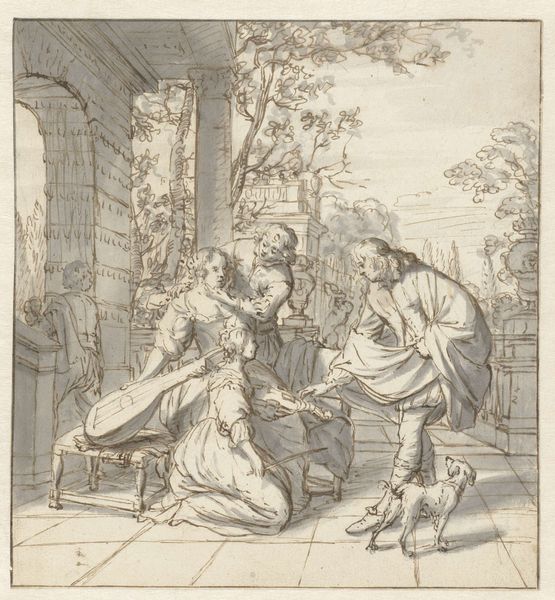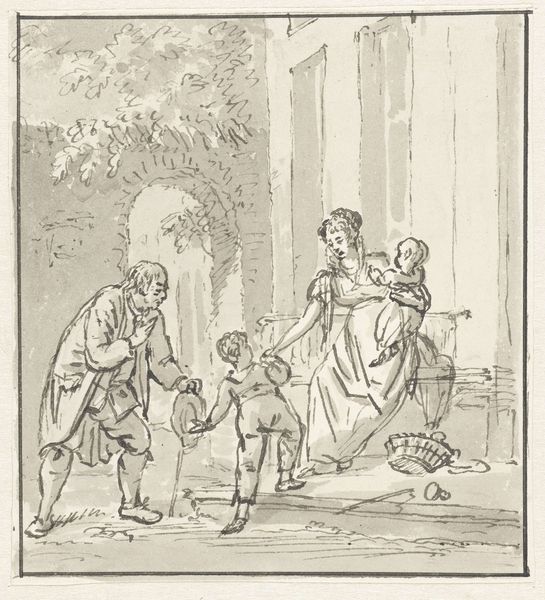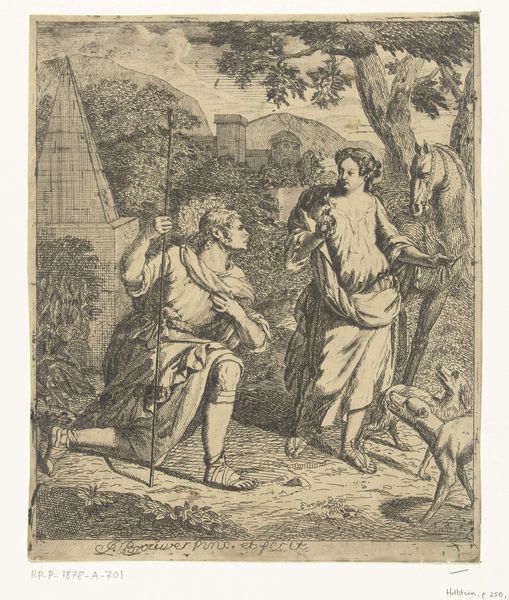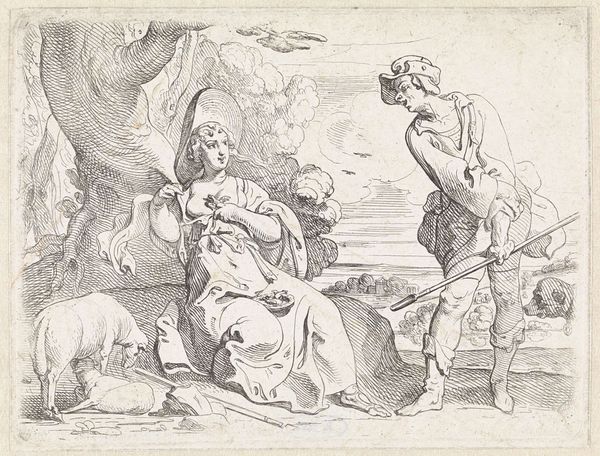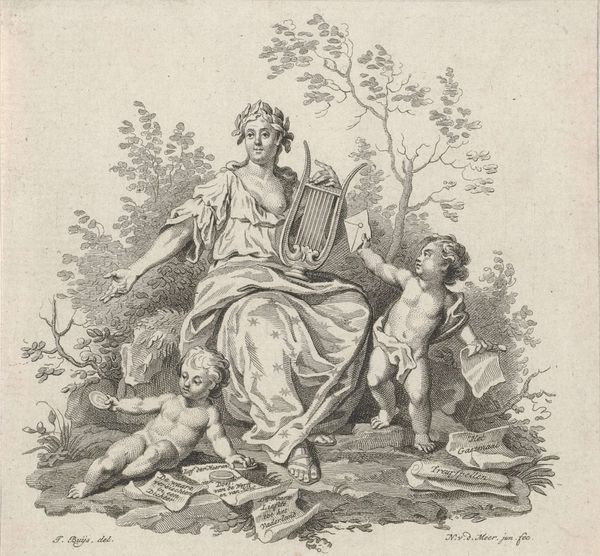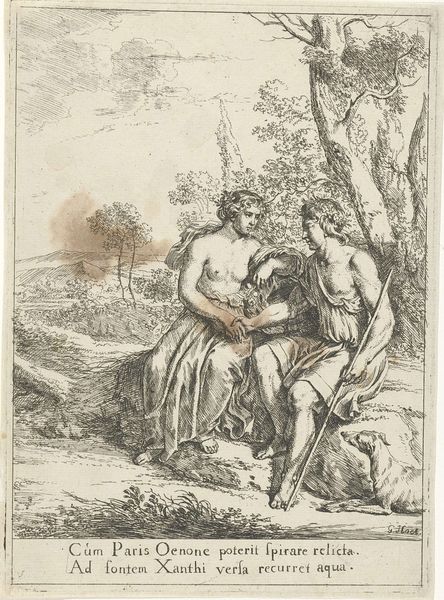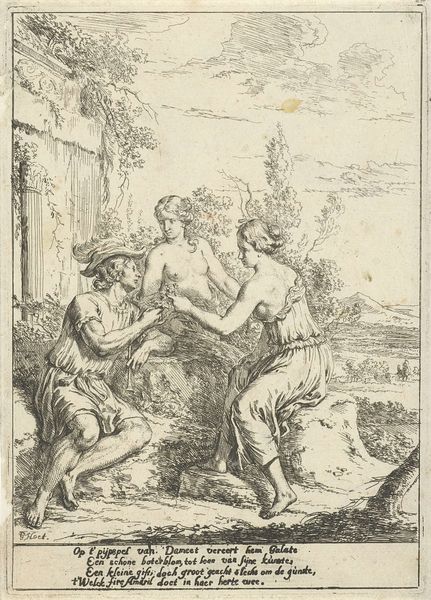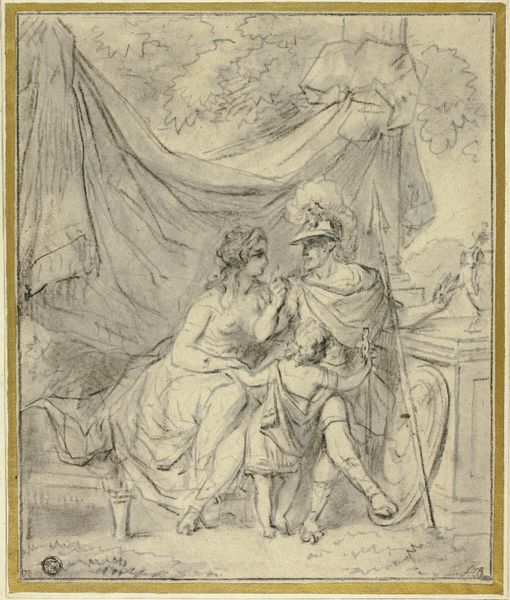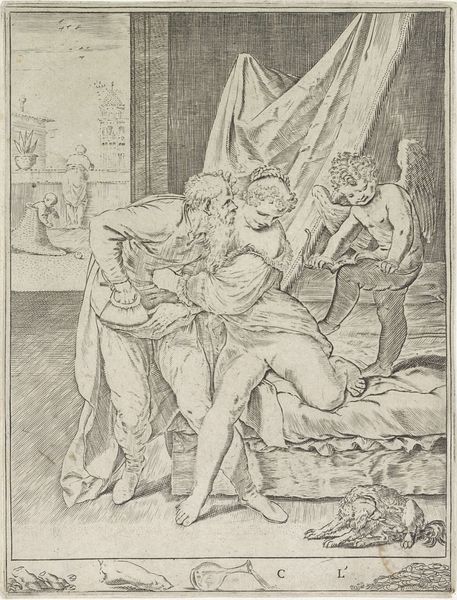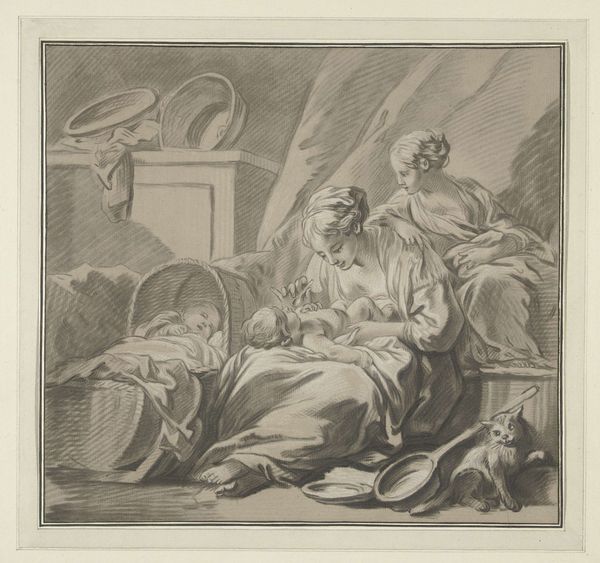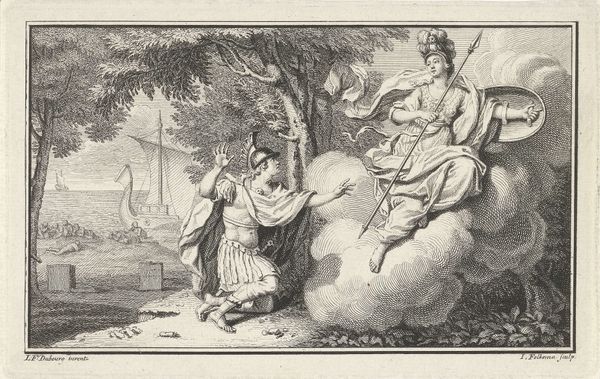
drawing, ink, pen
#
drawing
#
narrative-art
#
baroque
#
landscape
#
figuration
#
ink
#
pen
#
history-painting
Dimensions: height 144 mm, width 148 mm
Copyright: Rijks Museum: Open Domain
Curator: This is a pen and ink drawing called "The Good Samaritan" by Louis Fabritius Dubourg, likely created sometime between 1703 and 1775. You can find it at the Rijksmuseum. Editor: It’s bleak, isn’t it? Bleak in color, bleak in subject. A figure lies stricken at the foot of what looks like a classical building, attended to by another while yet another stands by, observing. Curator: The monochrome wash really lends itself to the narrative, wouldn't you say? The pen strokes, you can almost see the artist wrestling with the physical act of representing this parable. How do you translate compassion through mere lines and the stark contrast of ink and paper? Editor: Well, for starters, the iconography is potent. The prone figure clearly represents suffering, the kneeling one empathy and action. Even the classical architecture—that architectural order is being positioned against disorder, human misery and lack of grace in that desolate landscape. Curator: Absolutely, and the landscape itself! It's so integral. Not just a backdrop, but a testament to the harsh realities of the world – the materials, the textures, they’re almost confrontational, pushing against any prettified reading of the subject. Editor: And let’s not forget the implicit commentary on society embedded in this religious subject matter. The Good Samaritan isn’t just about individual kindness. It’s a broader critique, challenging hierarchies and the abuse of power. Even today, who holds the power, the materials, and whose bodies are broken because of it? The dogmatic meaning really adds to its context. Curator: It forces you to think, doesn't it? The accessibility of drawing, pen on paper, becomes a sort of egalitarian act itself, demystifying art production, placing the emphasis squarely on the message. There's something quite moving in its humble nature. Editor: Yes, despite its somewhat static quality, this "Good Samaritan" really conveys its messages across time, doesn't it? Those universal themes of empathy and accountability still deeply resonate through the iconic figures presented to us here.
Comments
No comments
Be the first to comment and join the conversation on the ultimate creative platform.
